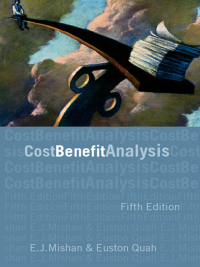Question
Christophers Custom Cabinet Company uses a job order cost system with overhead applied as a percentage of direct labor costs. Inventory balances at the beginning
Christophers Custom Cabinet Company uses a job order cost system with overhead applied as a percentage of direct labor costs. Inventory balances at the beginning of 2018 follow:
| Raw Materials Inventory | $ | 16,700 |
| Work in Process Inventory | 5,600 | |
| Finished Goods Inventory | 20,900 | |
The following transactions occurred during January:
(a) Purchased materials on account for $28,000. (b) Issued materials to production totaling $21,800, 90 percent of which was traced to specific jobs and the remainder of which was treated as indirect materials. (c) Payroll costs totaling $17,200 were recorded as follows: $10,400 for assembly workers 1,700 for factory supervision 2,800 for administrative personnel 2,300 for sales commissions (d) Recorded depreciation: $4,600 for factory machines, $1,300 for the copier used in the administrative office. (e) Recorded $2,000 of expired insurance. Forty percent was insurance on the manufacturing facility, with the remainder classified as an administrative expense. (f) Paid $5,400 in other factory costs in cash. (g) Applied manufacturing overhead at a rate of 200 percent of direct labor cost. (h) Completed all jobs but one; the job cost sheet for the uncompleted job shows $2,300 for direct materials, $2,000 for direct labor, and $4,000 for applied overhead. (i) Sold jobs costing $50,200. The revenue earned on these jobs was $65,260. Required: 1. Set up T-accounts, record the beginning balances, post the January transactions, and compute the final balance for the following accounts:
- Raw Materials Inventory.
- Work in Process Inventory.
- Finished Goods Inventory.
- Cost of Goods Sold.
- Manufacturing Overhead.
- Selling, General, and Administrative Expenses.
- Sales Revenue.
2. Determine how much gross profit the company would report during the month of January before any adjustment is made for the overhead balance.
3. Determine the amount of over- or underapplied overhead.
4. Compute adjusted gross profit assuming that any over- or underapplied overhead balance is adjusted directly to Cost of Goods Sold.
Christophers Custom Cabinet Company uses a job order cost system with overhead applied as a percentage of direct labor costs. Inventory balances at the beginning of 2018 follow:
| Raw Materials Inventory | $ | 16,700 |
| Work in Process Inventory | 5,600 | |
| Finished Goods Inventory | 20,900 | |
The following transactions occurred during January:
(a) Purchased materials on account for $28,000. (b) Issued materials to production totaling $21,800, 90 percent of which was traced to specific jobs and the remainder of which was treated as indirect materials. (c) Payroll costs totaling $17,200 were recorded as follows: $10,400 for assembly workers 1,700 for factory supervision 2,800 for administrative personnel 2,300 for sales commissions (d) Recorded depreciation: $4,600 for factory machines, $1,300 for the copier used in the administrative office. (e) Recorded $2,000 of expired insurance. Forty percent was insurance on the manufacturing facility, with the remainder classified as an administrative expense. (f) Paid $5,400 in other factory costs in cash. (g) Applied manufacturing overhead at a rate of 200 percent of direct labor cost. (h) Completed all jobs but one; the job cost sheet for the uncompleted job shows $2,300 for direct materials, $2,000 for direct labor, and $4,000 for applied overhead. (i) Sold jobs costing $50,200. The revenue earned on these jobs was $65,260. Required: 1. Set up T-accounts, record the beginning balances, post the January transactions, and compute the final balance for the following accounts:
- Raw Materials Inventory.
- Work in Process Inventory.
- Finished Goods Inventory.
- Cost of Goods Sold.
- Manufacturing Overhead.
- Selling, General, and Administrative Expenses.
- Sales Revenue.
2. Determine how much gross profit the company would report during the month of January before any adjustment is made for the overhead balance.
3. Determine the amount of over- or underapplied overhead.
4. Compute adjusted gross profit assuming that any over- or underapplied overhead balance is adjusted directly to Cost of Goods Sold.
answer the below
Unadjusted gross profit (. )
Manufacturing overhead (. )
Adjusted Gross Profit (. )
Step by Step Solution
There are 3 Steps involved in it
Step: 1

Get Instant Access to Expert-Tailored Solutions
See step-by-step solutions with expert insights and AI powered tools for academic success
Step: 2

Step: 3

Ace Your Homework with AI
Get the answers you need in no time with our AI-driven, step-by-step assistance
Get Started


